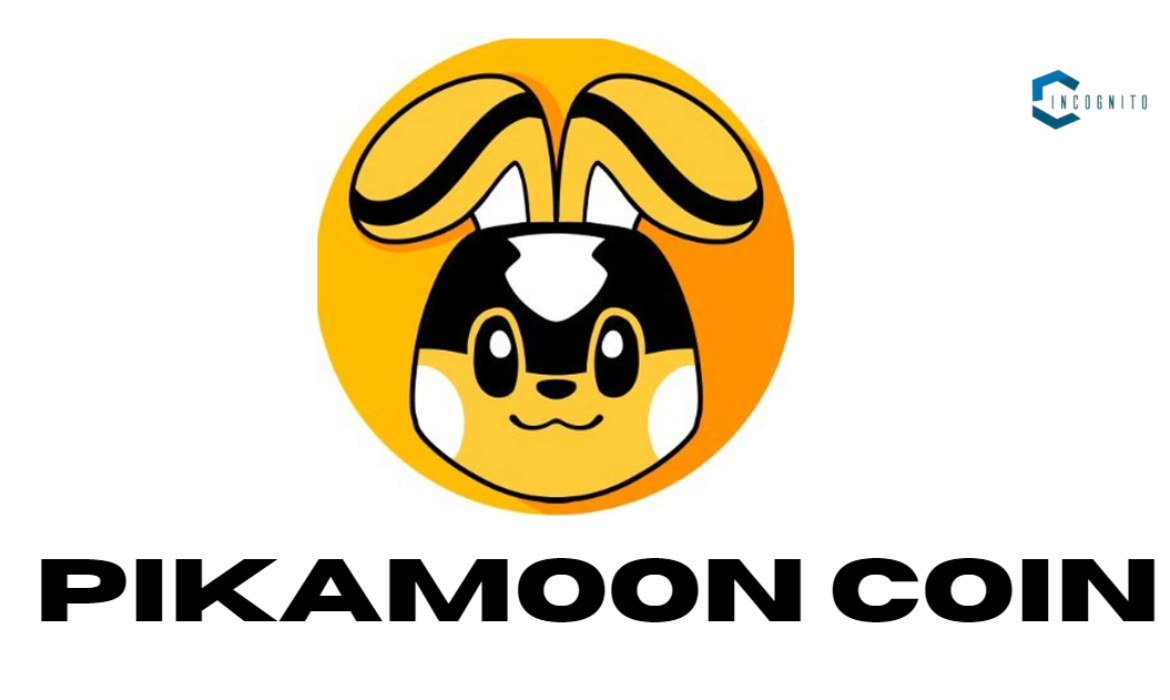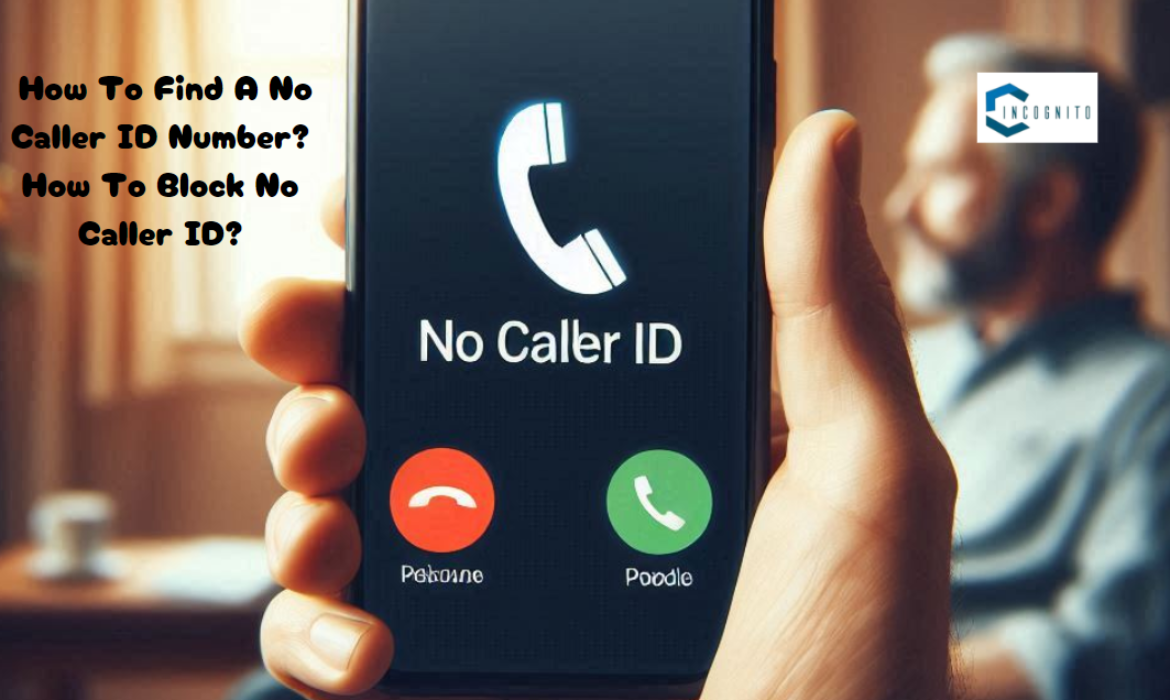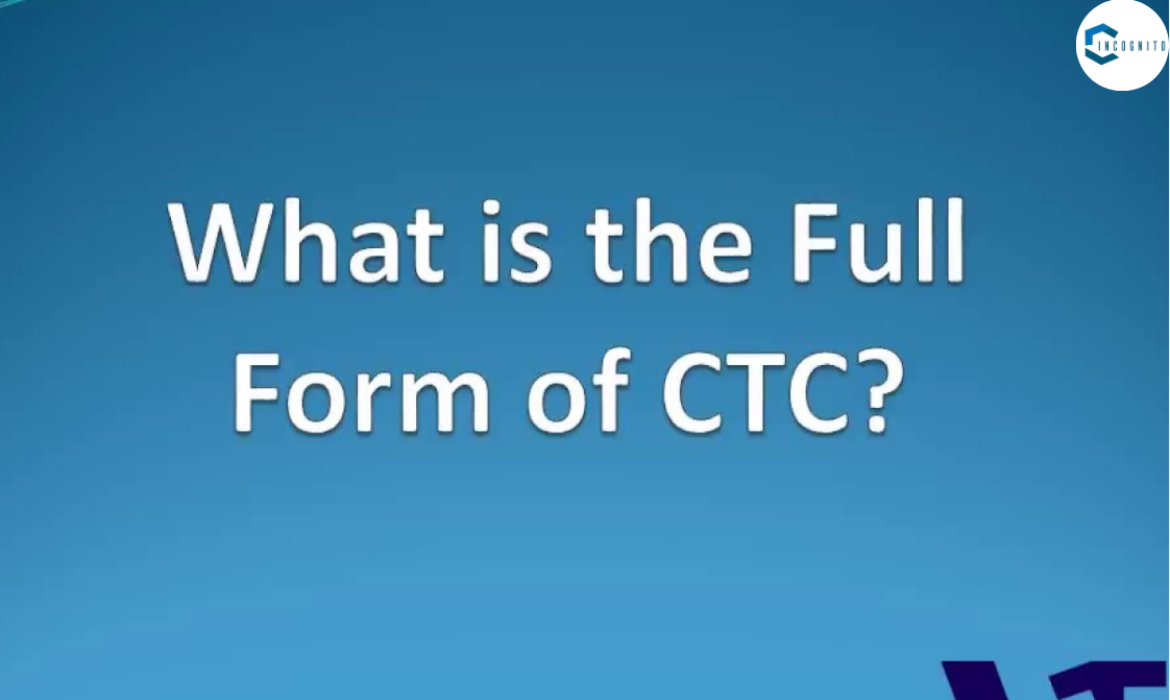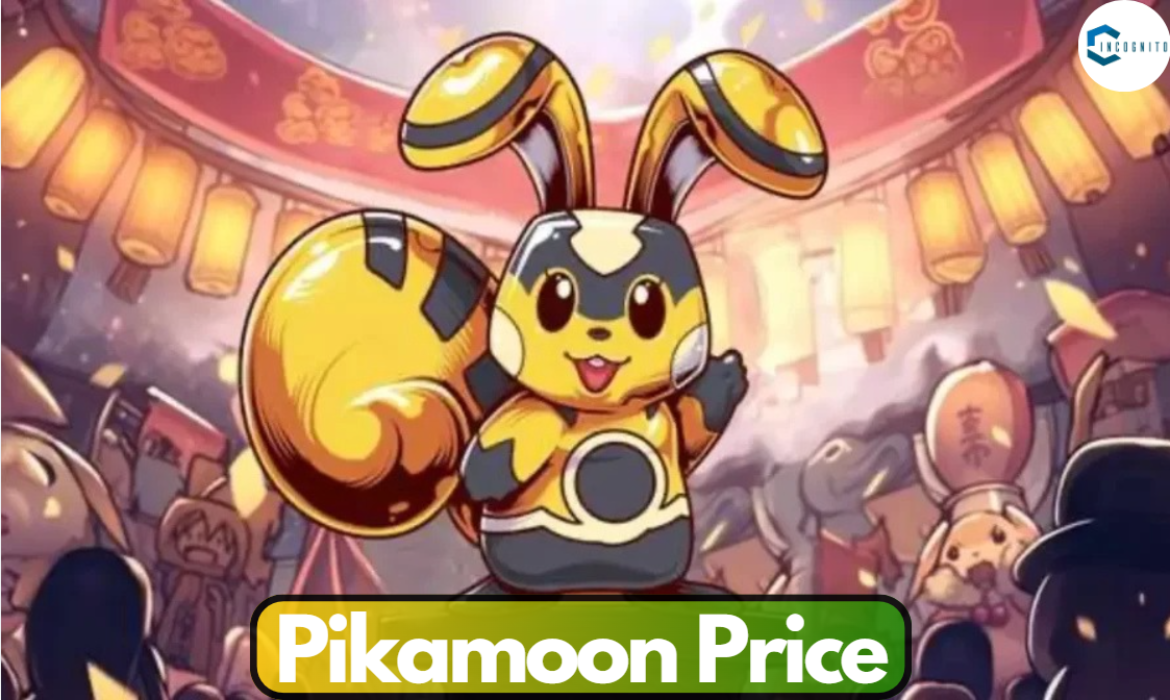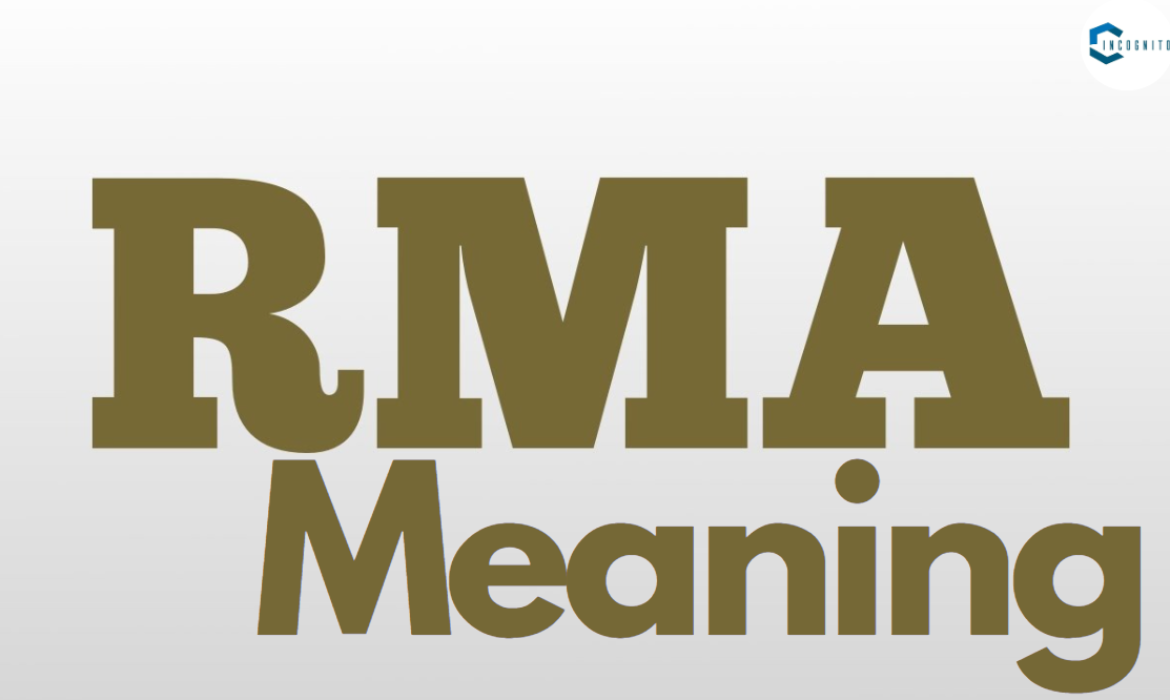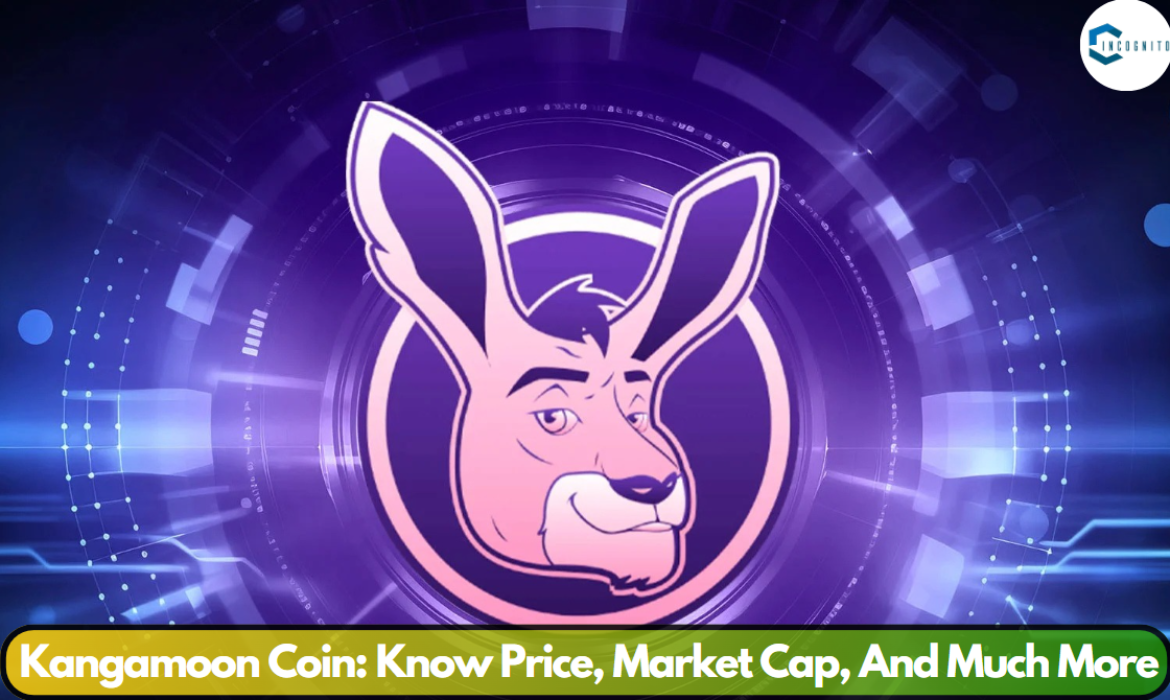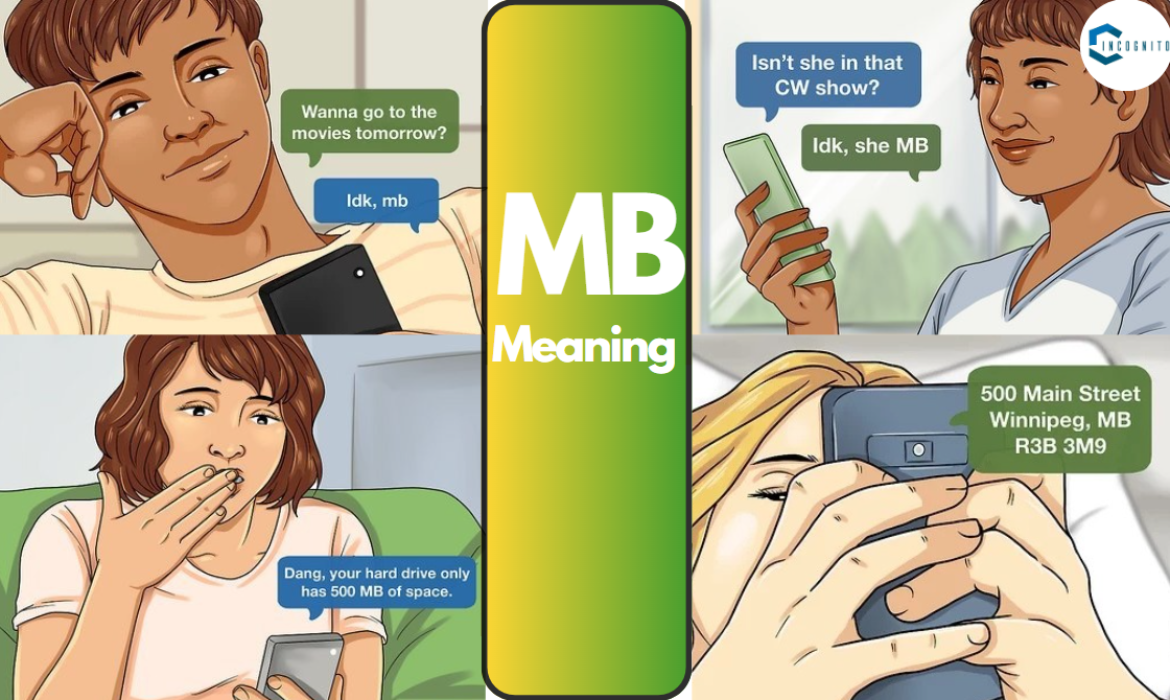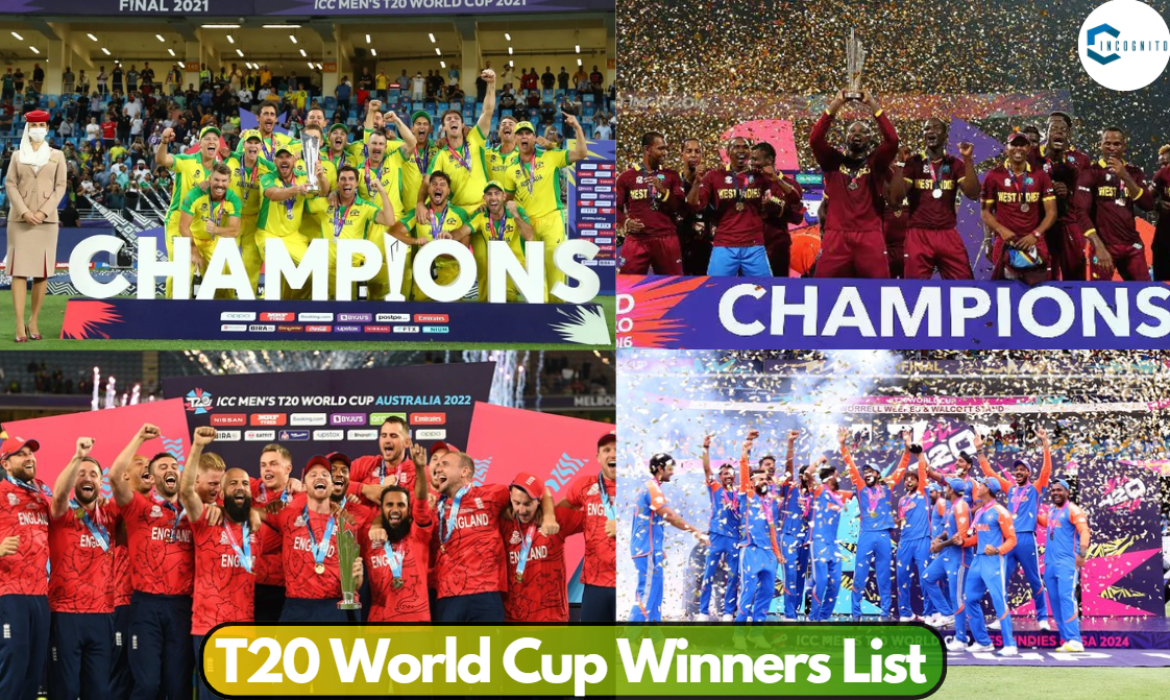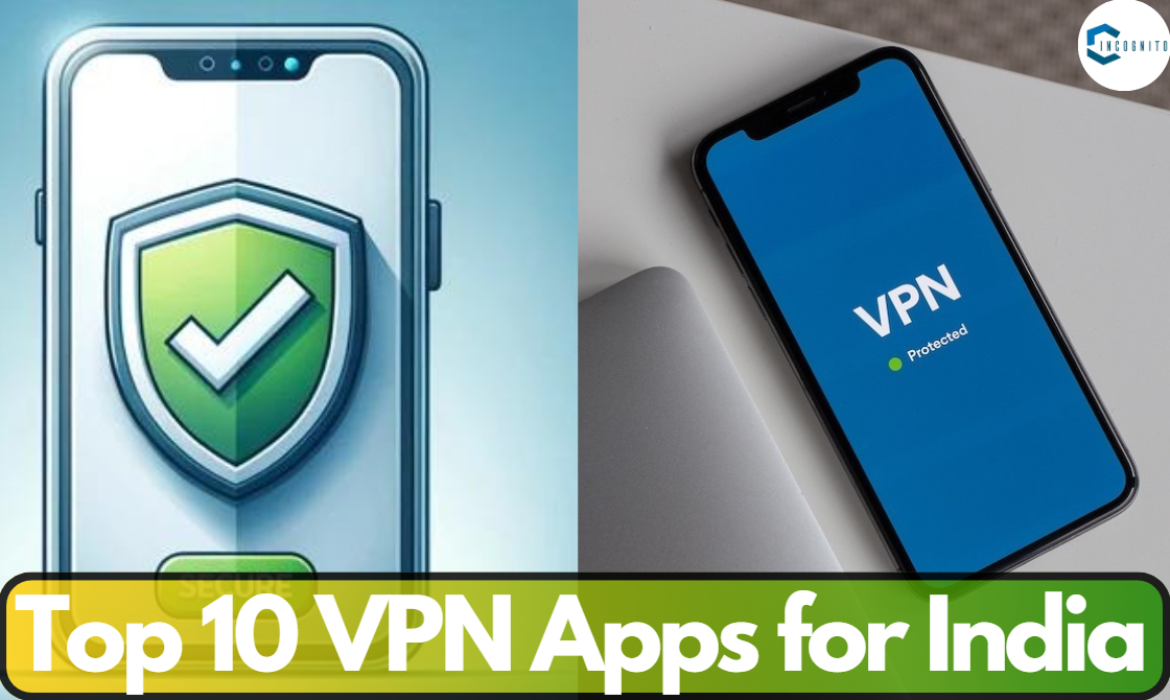PikaMoon Coin: Features, Chart, Market Cap, And Price In 2024
There are always new projects being developed in the cryptocurrency space, and everyone desires a piece of the new projects. One of them is Pikamoon Coin or $PIKA being used in the fun game Pikamoon where your bonuses are to be earned within the game. If you consider yourself an expert in the cryptocurrency industry or you are only a beginner, we have everything about PikaMoon Coin.
Let’s understand more.
What is PikaMoon Coin?
Pikamoon is not just a type of digital money, it’s also the entrance into the big world of Dreva which is a cool place where you can go on adventures, be creative, and win prizes by playing games. The most important part of this experience is $PIKA, the Pikamoon token.
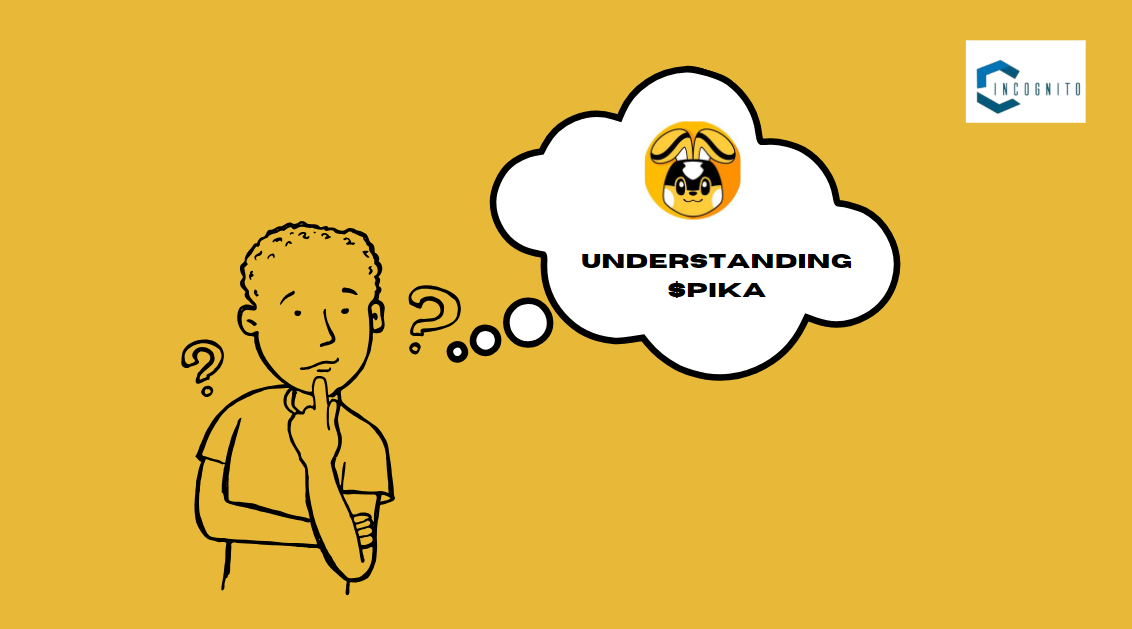
Understanding $PIKA: The Pikamoon Token
Understanding $PIKA: The Pikamoon Token
- In-game Currency: In Dreva, the main money used is called $PIKA where players can use the game currency to buy things like power-ups, health potions, weapons, and other stuff in the gameplay. Thus, these kinds of improvements make the playing experience better and give players more strength in their adventures.
- Earning Rewards: In Pikamoon, you can earn $PIKA by playing the game. Players can get $PIKA tokens by finishing tasks and goals in the game where this money (PIKA) can be used to buy more things in the game or it might be changed into regular (Real) money.
- Deflationary Model: It uses a deflationary token model which means the total number of $PIKA tokens goes down over a period of time and thus this lack of tokens can make the value of it go up in the future.
Pikamoon Appeal (Merge Gaming with Earning)
It has something special for people who like to play video games and simultaneously are interested in cryptocurrency where it brings together the fun of gaming with the chance to win actual prizes. The mix of fun and making money is a big reason why the project is becoming more popular.
- Fun Gameplay: The world of Dreva has many exciting things to do, with lots of different challenges and adventures for players to enjoy. This makes sure that playing to earn doesn’t take away from the main game.
- Community Focus: They focus on building a strong community for the game and the $PIKA token. Working together to create a positive environment can help the project succeed in the long run.
PikaMoon Coin Price
The price of PikaMoon Coin goes up and down depending on the market, just like other cryptocurrencies. As of October 12th, 2024, the price is about $0.000351 in US dollars.
Market Cap
As of October 12th, 2024, the project is worth about $6.71 million USD. This graph shows that Pikamoon is still new compared to other cryptocurrencies.
Market capitalization means the total value of all the $PIKA tokens that are being used where a small market value like Pikamoon means there can be a chance for the company to grow but it’s important to remember that the value of a company can go up and down a lot.
Coin Chart
You should learn how to read and understand price charts in order to study the past activity of that particular cryptocurrency and maybe predict its further activity in the near future. Sometimes, you can find the charts of PikaMoon Coin on various websites that track the cryptocurrencies such as CoinMarketCap and CoinGecko where these charts demonstrate how much PikaMoon Coin costs at a certain period of time so you can study its tendency.
- Timeframe: On the site, you can choose the time that you are interested in seeing and also the price fluctuations for the day, week, month, or year of your choice depending on preference.
- Price Movements: Watch how the price of Pika Moon Coin has changed over the chosen time. Check for big price changes and see if you can find any patterns.
- Trading Volume: The chart shows how many PikaMoon Coins are traded in a certain time. More trading means more activity in the market.
- Technical indicators: They are tools used with price charts to understand how prices might move in the future. However, these signs might not always be accurate, so it is important to also consider other ways of studying the situation.

PikaMoon Coin Buy
PikaMoon Coin Buy
To get Pikamoon Coin, go to the official Pikamoon website and look for the part where you can buy their digital money. Once you are there, you can probably buy Pika moon Coin using different ways to pay like credit/debit cards, bank transfers, or other digital money, depending on what the platform allows.
Usually, you have to make a Pikamoon account if you haven’t done it yet. Next, do what the instructions say to finish buying. This might mean choosing how much Pikamoon Coin you want to buy and making sure your payment information is correct.
After you buy them, the Pikamoon Coins will be added to your account and you can use them in the Pikamoon system. You can use these coins to buy things, attend events, or trade on certain websites.
FAQs
- What is Pikamoon Coin?
Pikamoon Coin ($PIKA) is a cryptocurrency used in the Pikamoon game for adventures, creativity, and rewards. - How can players earn $PIKA in Pikamoon?
Players earn $PIKA by completing tasks and goals, which can be used in-game or exchanged for real money. - What makes Pikamoon appealing?
Pikamoon combines gaming and cryptocurrency, offering players exciting gameplay and the chance to win real prizes. - Where can I check the PikaMoon Coin price?
The price of PikaMoon Coin can be tracked on websites like CoinMarketCap and CoinGecko. - How can I buy PikaMoon Coin?
You can buy PikaMoon Coin on the official Pikamoon website using various payment methods after creating an account.
To Sum Up:
Pikamoon has something exciting for people especially those who love playing games and are interested in cryptocurrency. The game is fun to play where you can win prizes and it helps people make a bond together thus it definitely becomes something to keep an eye on. However, before putting money into something, it is always important to do careful research.
By keeping track of how the project is progressing and understanding the overall P2E industry, you can make smart choices about Pika moon and its $PIKA token.
That’s it for now. 🤟
Thanks for reading.
READ MORE BLOGS ABOUT OTHER CRYPTOCURRENCIES:
How To Find A No Caller ID Number? How To Block No Caller ID In 2024?
We use our phones to talk to people, connect with others, and access important services but getting unwanted calls can be really annoying for anyone worldwide these days. In 2022, there were a lot of robocalls in the United States around 48 billion (source: YouMail) where many of these calls didn’t show who was calling and thus it gets you in a dilemma if you want to answer the phone or not.
Let’s understand more.
What No Caller ID means?
No Caller ID means someone is calling you without showing their phone number where basically they want to hide their identity.
- Privacy: The person calling may not want you to see their number because of personal reasons or their job.
- Sales: Telemarketers and some charities sometimes don’t show their phone numbers when they call so people don’t ignore the calls or make the calls look more important.
- Scams: Bad people often use secret numbers to not get caught and to make their calls seem more honest.
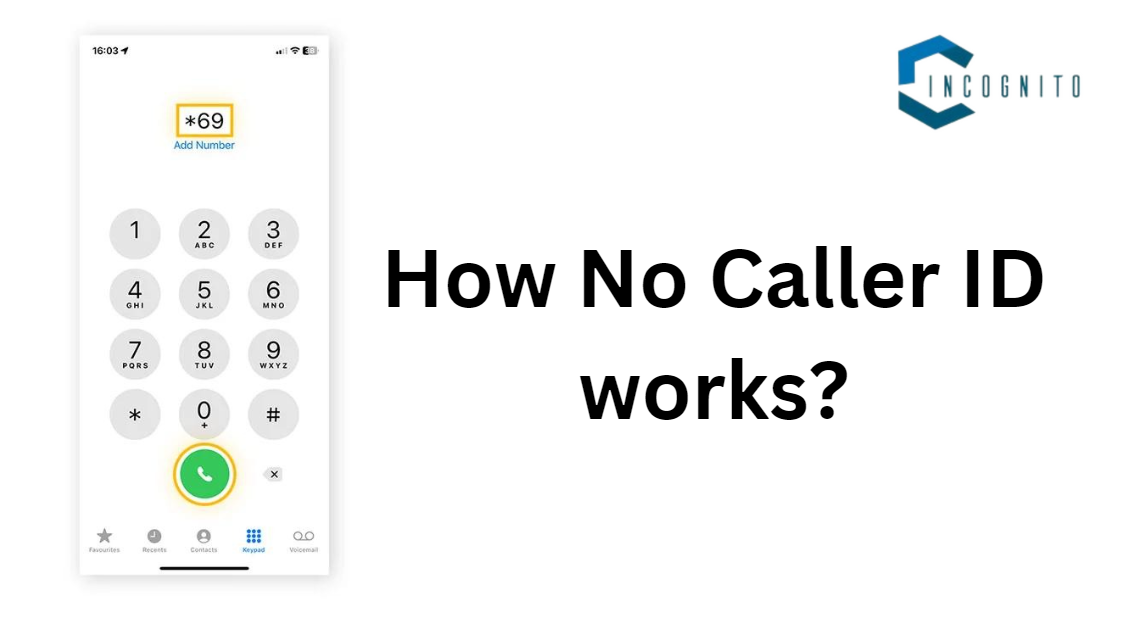
How No Caller ID works?
How No Caller ID works?
No Caller ID is when the person (who is calling you at that given point in time) doesn’t wish for their phone number to be displayed on your phone screen and this usually happens before the phone call starts.
- Caller Activation: The person calling decides to hide their phone number. This option is often available in the telephone menu or its settings, or through a code which may change with the phone company.
- Network Signal: According to when a person dials a call, his/ her phone number and the number he/she is calling transmit a message on the network.
- No Caller ID Activated: If a caller chooses no caller ID mode, instead of dialing the actual phone number, the callers’ phones send a code to the network.
- Network Filtering: When a caller elects to block their number, the network system that a phone call is placed with cancels the number from the call signal.
- Receiving the Call: On the rare occasions it rings, it may display No Caller ID or Unknown Caller as the caller’s number.
Some Cautious Steps to Follow
- Don’t Answer: If you have no idea then it is very unadvisable to answer the call and let it ring through to the end. Always keep in mind that an honest caller will often leave a message.
- Let the phone keep ringing: If you’re not sure but interested, you can let the phone ring and see if they leave a message.
- Screen the Call: You can check who is calling before answering the phone with this feature.
- Stop the Calls: If you keep getting calls from a number that doesn’t reveal their identity, you can stop them on your phone by blocking it.
Need of No Caller ID App
Apps that show No Caller ID can’t uncover the hidden number when the call comes in. However, they can be useful in finding out who is calling from an unknown number and maybe stop calls from numbers that don’t show up on caller ID in the future.
- Finding Database: These apps use big collections of phone numbers from people to help you find the information you need. Any time you receive a phone call and you are wondering who is calling you, the application searches for the phone number and displays the details in case it may be a company that has called or the name of the person that is calling.
- Community Reporting: There are many apps that let people tell about spam calls and strange numbers. This information helps the app recognize future calls with no caller ID as possible spam.
- Call-blocking: These apps can stop spam calls and also block numbers that don’t show up on caller ID.
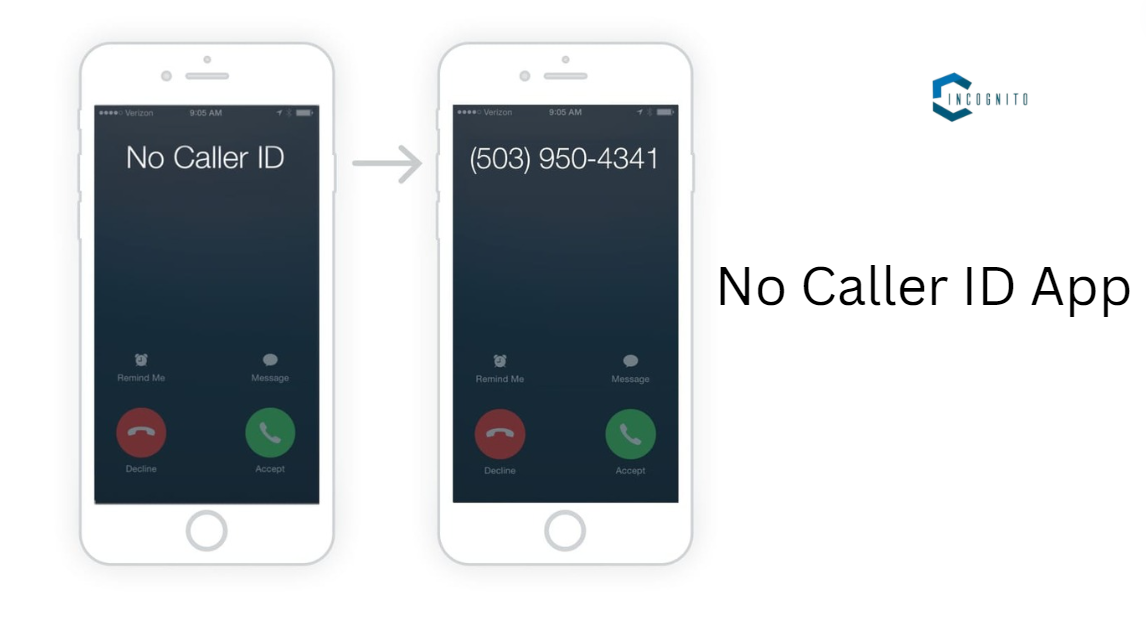
Popular No Caller ID Apps
Popular No Caller ID Apps
Truecaller
- Has a lot of people using it, which means there are a lot of phone numbers in the database.
- Provides information about who is calling, and identifies and blocks unwanted calls.
- Truecaller Assistant can use AI to check calls and ask questions of you in some places.
- It’s free of charge and if you want to get rid of advertisements and for additional features, you can purchase a pro version of the application.
Showcaller
- Puts emphasis on making it easy for the user and quickly showing who is calling.
- Detects and stops spam messages.
- It says it can work even without the internet (with some things not working).
- The basic version is a free one but they do allow the downloading of the ad-free for a premium fee as well as undertake more options.
Whoscall
- Especially good in East and Southeast Asia with a large collection of information from that area.
- Showing who is calling helps to identify spam calls and can stop those calls from coming in.
- Comes with Green Badges for confirmed calls and an SMS Scanner to spot unsure text messages.
- The basic version is completely free but you can pay an extra amount to get rid of unwanted ads and also can access more features.
TrapCall
TrapCall has a feature that no other service has.
- Stands out because it can show hidden numbers.
- When a phone call comes in without a caller’s number, TrapCall answers it with a recorded message.
- At times, TrapCall’s voicemail shows the hidden number when a robocaller leaves a message.
- This app has caller ID and can detect spam calls and block them, just like other apps.
- You need to pay to use all the features.
Don’t forget:
- The No Caller ID app’s success depends on how many people use it and how often it updates its database.
- Pick a reliable app that has a history of success.
- Think about the differences between something that is free and something that has a cost. Higher quality choices that fit what you want.
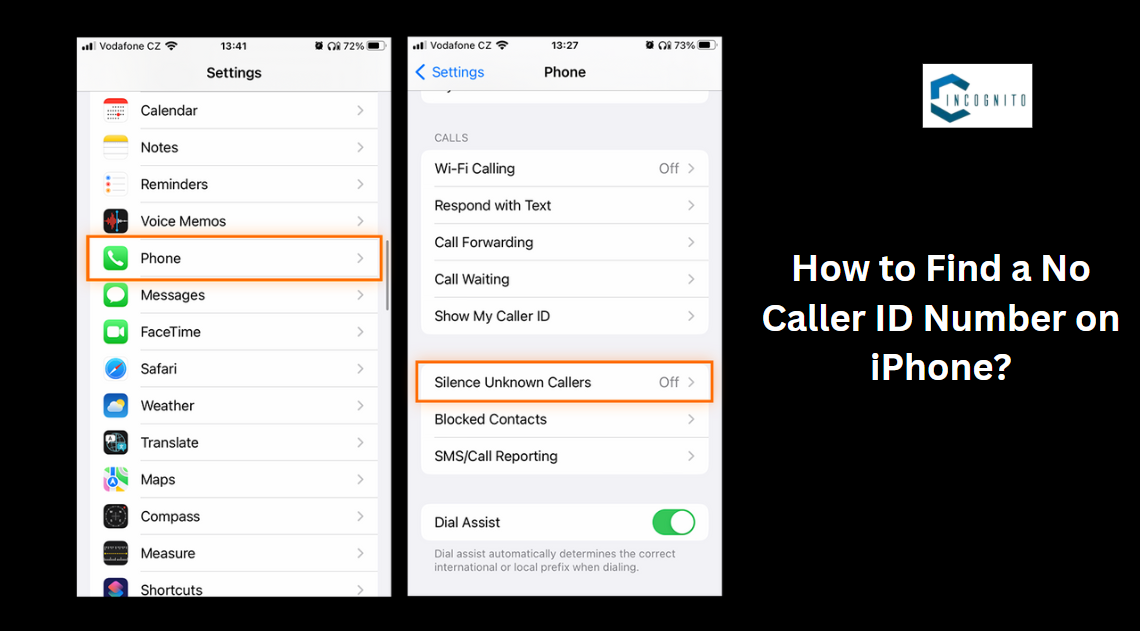
How to Find a No Caller ID Number on iPhone?
How to Find a No Caller ID Number on iPhone?
Sorry, but you can’t find out who is calling from a No Caller ID number on your iPhone.
Use Carrier Services (Limited).
Some phone companies provide a service called Call Trace or Caller ID Delivery that can show the hidden number for an extra cost. Get in touch with your phone company to find out if they have this and ask about how much it costs.
Dial *69 (Limited and Carrier Specific).
This code can find the number of the last missed call on some phones, including some iPhones, even if the call did not show a caller ID. But, it’s not guaranteed to work every time.
- Not all phone companies can use it.
- It might only work for a short time after the call.
Report the Call (Suspicious)
If you think someone is trying to trick you or bother you, tell the Federal Trade Commission or the police. You can report it online at (https://reportfraud.ftcgov/).
Identify Unknown Callers
- Although these apps can’t show hidden numbers right away, they can help you figure out who might be calling in the future.
- Big lists of phone numbers that have been reported as spam can be recognized when a call comes in with no caller ID and is similar to those reported numbers.
- Community reporting can help gather a list of unknown phone numbers that seem suspicious.
How to Find a No Caller ID Number on Android?
No Caller ID on your Android means the person calling you has tried to hide their phone number.
Limited Ways to Potentially Reveal the Number:
Dial *57: You can dial *57 on certain Android phones to stop a harassing call, depending on your phone carrier. This is not as common as dialing *69 to stop a call. This tells your phone company about the call and can give details about the phone number. But it may not show you the number right away.
Carrier Services (Limited): Certain phone companies offer services that you have to pay for, such as Call Trace or Caller ID Delivery. These services can possibly show the phone number of someone who is hiding it, thus you should get in touch with your phone company to find out if they have these services and simultaneously ask about any extra charges.
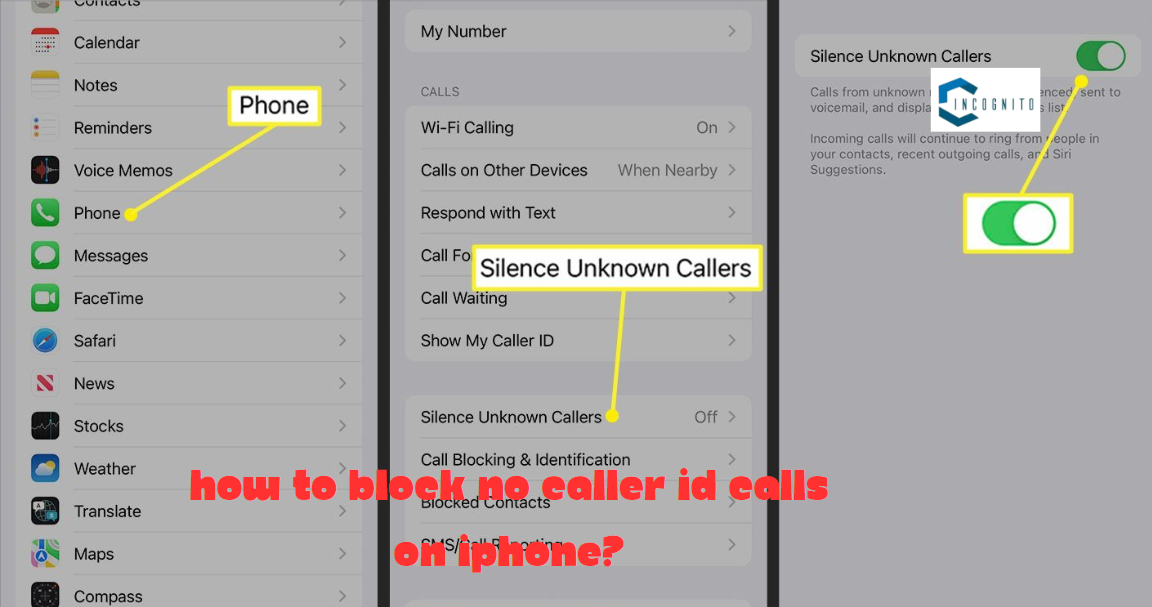
How to block No Caller ID calls on iPhone?
How to block No Caller ID calls on iPhone?
iPhones can’t block calls from No Caller ID because the number is unknown (hidden). However, there is a function called Silence Unknown Callers that can be useful.
- Open the Settings app on your iPhone.
- Scroll down and tap the Phone icon.
- Turn on Silence Unknown Callers in your phone settings by finding and switching it to the ON position (it usually turns green).
When this feature is turned on:
- And for calls which we do not recognize, we will not pick it up instead it will go to voice mail.
- You will, however, receive a notification message that a call was made by the person whose call you missed within the recent calls section.
How to block No Caller ID calls on Android?
It’s not possible to block calls from numbers that are hidden on Android. However, there are ways to reduce them and handle calls you don’t want.
Block Unknown Numbers
Stop calls from numbers you don’t know on Android phones that use the Google Phone app. This does not include anything, Caller ID shows who is calling.
- Open the Phone app.
- Click on the More icon, which is usually three dots, in the top right corner.
- Go to the Settings.
- Look for numbers that are Blocked and tap on them.
- Turn on the option to either accept calls from unknown numbers, or block calls from unknown numbers.
Block After the Call
If you get a call from someone with a hidden number, you can block that number later.
- Launch the Phone app.
- Go to the Recent section.
- Look for the call with no caller ID and click on the information icon (i) next to the number.
- Find a choice called Block number or Add to block list and tap on it.

How to call someone with No Caller ID?
How to call someone with No Caller ID?
There are a few ways to contact someone when your caller ID is hidden, but it’s important to know the possible problems and dangers.
Using Your Phone Settings:
Unfortunately, it’s hard to hide your Caller ID on most smartphones for all calls. Your carrier might limit this feature.
Carrier Services:
Some phone companies can hide your number when you make a call. These services usually cost money and you may need to call your phone company to turn them on.
Third-Party Apps
Some apps say they can hide the caller’s ID. But be careful when dealing with these.
- Legality: Using apps to hide your caller ID may be against the law in certain areas. Make sure it’s okay with the rules in your area before using these apps.
- Safety: These apps may need to see important information on your phone. Make sure you believe in the person who made the app and know what they do with your information before you use it.
Alternatives:
- Landline Calls: If all of you have a fixed-line telephone at home, then your service provider may allow you to block your number each time you make a call. However, a smaller population is actually owning and using a landline phone for their communication needs even nowadays.
- Burner Phones: Burner phones are not a good idea because they are temporary phones that you can throw away and they come with a SIM card that you pay for in advance. Be careful because burner phones are linked to illegal activities and are usually not a good idea.
Important things to think about:
- It might make the recipient of the call feel uncomfortable, possibly scared, or stressed if they never requested the call through the line that has NO Caller ID.
- There is also the aspect of privacy which must always be kept in mind and maintained at all times. You should consider whether the need exists for not showing your phone number to someone and whether there is a more appropriate approach to convey a message.
FAQs
- What does “No Caller ID” mean?
It means someone is calling without showing their number to hide their identity. - How does No Caller ID work?
The caller hides their number before calling, making it show as “No Caller ID.” - How can I avoid answering No Caller ID calls?
You can let the phone ring or enable call-blocking apps to screen unwanted calls. - Can I identify a No Caller ID number on my iPhone?
Unfortunately, iPhones can’t reveal hidden numbers, though carrier services may help. - Are there apps to manage No Caller ID calls?
Yes, apps like Truecaller and TrapCall can identify and block suspicious or unknown calls.
To Sum Up:
It’s time to sum up where using No Caller ID can keep your calls private, but it might make people doubt who is calling them. Be careful with calls from unknown numbers. So, if you are thinking of hiding your number, it’s good to be aware of the possible issues and ethical questions associated with using carrier services (which may be paid) or third-party applications (that are often illegitimate and unsafe). Please remember that we should be concise while speaking on the phone and avoid intruding into the personal lives of others.
That’s it for now. 🤟
Thanks for reading.
CTC Full Form: Is It Related To Jobs And Salary?
You may have heard the term CTC many times if you are a student and new to jobs. You have thought that is it related to salary? What is CTC Full Form? Stay tuned to the end to know all the information.
What is CTC and What Does It Stand For?
First off, let’s answer the most important question: What is the full form of CTC? CTC stands for Cost to Company.
In simpler terms, it’s the total amount a company spends on an employee in a year. But this doesn’t just mean the salary you take home. CTC is the complete package and it includes everything from your basic salary to all the perks, bonuses, and benefits.
|
Component |
Example |
| Basic Salary |
The main part of your paycheck |
|
HRA (House Rent Allowance) |
Money for your accommodation |
| PF (Provident Fund) |
Retirement savings contribution |
|
Medical Insurance |
Health cover for you (sometimes family) |
| Bonuses |
The extra money you may get during the year |
Now, here’s the catch: not everything included in your CTC is something you’ll see in your monthly paycheck. Some of it is indirect, like your provident fund, or benefits like insurance that you don’t get as cash.
Is CTC Really Related to Jobs and Salary?
Yes! Absolutely, CTC is mostly related to jobs and salaries. Whenever you apply for a job or get an offer, companies often tell you the CTC they are willing to offer. But remember, it’s the total cost they spend on you, not the actual cash you take home every month.
Imagine this: If your CTC is ₹10 lakh per year, your monthly salary won’t be exactly ₹83,333. Why? Because some part of that ₹10 lakh is for things like your provident fund, health insurance, and maybe even some allowances that are given out yearly.
Different Meanings of CTC (It’s Not Just About Salary!)
Though CTC is often linked to jobs and salary, it actually has other meanings too. Here are some common ones:
- CTC in the Tea Industry:
In the tea world, CTC stands for Crush, Tear, Curl. This refers to the method used to process black tea. If you’re a tea lover, the tea you sip might have gone through this CTC process. - CTC in Government or Companies:
Sometimes, CTC can mean Centralized Traffic Control, often used in railways to monitor train traffic. So, it’s not always about money! - Call to Confirm (CTC):
This is commonly used in emails or messages when someone is asking you to confirm a meeting or event.
Why Does Knowing CTC Matter in Jobs?
When you’re discussing job offers then knowing your CTC is important because it helps you understand what you’re truly getting from the company. You might think that you’re getting a huge salary but when you break down the CTC then you’ll realize that part of it is in benefits, allowances, and other perks.
Here are a few things to keep in mind when looking at a CTC offer:
- Check your actual take-home salary: This is the amount you’ll get after all deductions (like taxes and PF).
- Look at the perks: Perks like insurance or bonuses can be really valuable but won’t show up in your bank account every month.
- Tax implications: Some parts of your CTC might be taxed differently, so know what’s taxable.
Conclusion About CTC Full Form:
Yes, the CTC full form is definitely connected to jobs and salary! It’s a way for companies to show the full value they are offering an employee. But remember, it’s not just your monthly salary; it includes all the extras too. So, next time someone talks about CTC, you’ll know exactly what they mean! Whether you’re looking at a job offer or just curious about your current salary package, understanding CTC can help you better manage your expectations.
READ MORE ABOUT MEANINGS.
Pikamoon Price ‘24: Should You Invest In It?
Cryptocurrency is always a hot topic and there’s a new coin-making wave, Pikamoon (PIKA). You might have heard whispers about it but are unsure whether it’s worth your investment. Well, you’re in the right place! Let’s break down everything you need to know about Pikamoon in simple, everyday language.
Is it a solid investment for 2024? Let’s figure out Pikamoon Price.
What is Pikamoon?
Before we dive into the numbers, let’s get a clear idea of what Pikamoon (PIKA) actually is. Pikamoon is a digital token that’s part of the Ethereum ecosystem. Like other cryptocurrencies, you can trade it on various exchanges. You may find it on platforms like Uniswap, MEXC, and Bitget, but it’s not as well-known as Bitcoin or Ethereum yet.
- Current Price: $0.0003955
- Market Cap: $7,052,016 (ranked #1614)
- Total Supply: 46.8 billion tokens
- Trading Volume (Last 24 hours): $44,200.89
These numbers might seem overwhelming, but let’s break them down. The market cap is how much all the tokens in circulation are worth. Pikamoon’s market cap places it way below the giants like Bitcoin, but that’s expected for newer or smaller tokens.
Why Are People Talking About Pikamoon?
One reason Pikamoon has caught some attention is because it’s had price movements that are hard to ignore. In the past week, it’s increased by 5.1%, and over the past month, it’s up 40.5%. These aren’t life-changing numbers, but they’re enough to get crypto fans interested. Plus, it’s seen a 24.9% increase in trading volume recently, which means people are buying and selling more of it.
How Does Pikamoon’s Price Compare to Others?
Now, this part is important for any investor. You want to see how Pikamoon is doing compared to similar cryptocurrencies. While it’s gone up 0.50% in the last 7 days, it’s still not keeping up with the global cryptocurrency market, which is up by 1.30%.
But let’s look at Ethereum-based tokens. Pikamoon coin has underperformed compared to its Ethereum family. The Ethereum ecosystem has gone up by 12.70% recently, meaning Pikamoon still has some catching up to do.
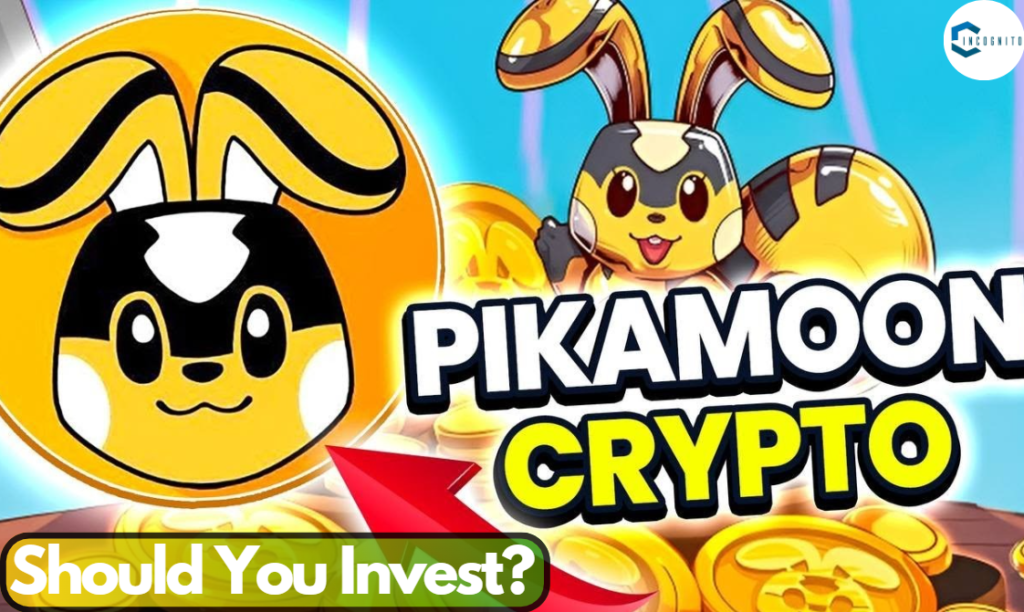
Should You Invest in Pikamoon?
Should You Invest in Pikamoon?
Alright, now we’re getting to the heart of the matter. Should you put your money into Pikamoon in 2024? Here are a few things to consider:
Pros:
- Low Price: At $0.0003955, Pikamoon is still dirt cheap. If you believe in its future potential, buying now would be like getting in early before any significant price surge.
- Growing Popularity: While still under the radar, Pikamoon is slowly gaining traction. The 24-hour trading volume has increased by almost 25% in just one day. That’s a sign more people are interested.
- Potential for Growth: Like many small tokens, Pikamoon could grow massively if it gets the right backing or attention.
Cons:
- High Risk: Pikamoon is still far away from reaching its all-time high of $0.003967 from March 2024. Its current price is 90% lower than that peak.
- Volatility: Cryptos like Pikamoon can be very volatile. It could either rise fast or sink just as quickly.
- Competition: Pikamoon is part of the massive Ethereum ecosystem, meaning it has to compete with many other tokens that could have better potential.
If you’re the type of investor who likes to gamble on high-risk, high-reward opportunities, Pikamoon might interest you. But if you prefer stable investments, it might be a bit too risky right now.
What’s Driving Pikamoon’s Popularity?
Let’s take a closer look at why Pikamoon is gaining some buzz. One major reason is its availability on various platforms. You can buy and sell Pikamoon on decentralized platforms like Uniswap, as well as centralized ones like Bitget and MEXC.
This makes it accessible to a wider range of investors who use different platforms. Plus, with the Ethereum ecosystem backing it, Pikamoon is part of a trusted, well-established network.
Historical Performance: What We Can Learn
Understanding a coin’s history can help us predict where it might go next. Pikamoon hit its all-time low of $0.0001965 just 20 days ago. This was a low point, but the price has doubled since then, giving hope to those who believe in its future. On the other hand, it’s also dropped significantly from its all-time high of $0.003967 in March this year.
This kind of fluctuation shows that Pikamoon is still finding its place in the market. You should be ready for price jumps and drops if you’re planning to invest.
Conclusion About Pikamoon Price: To Buy or Not to Buy?
So, should you invest in Pikamoon? If you’re looking for a low-cost, high-risk opportunity, it could be worth considering. It’s currently cheap, and it has the potential to grow if the right factors fall into place. However, the volatility and competition in the Ethereum ecosystem make it a risky bet.
If you’re feeling adventurous and willing to take some risk, Pikamoon could be an interesting investment for 2024. Just don’t invest more than you’re willing to lose. Keep an eye on how it performs in the next few months, and always do your own research before diving in!
READ MORE ABOUT COINS:
RMA Meaning: Know All The Different Definitions With Examples
You are here because you have seen the acronym RMA somewhere like in texting. You don’t know what it means. Don’t worry because you will get to know everything in this blog about RMA. There are different RMA meanings in various contexts and we have tried to make you understand through examples.
Stay tuned to the end.
What Does RMA Mean? Let’s Break it Down!
1. Return Merchandise Authorization (RMA)
- Main use: This is probably the most common meaning of RMA. If you’ve ever had to return a faulty product, you’ve likely dealt with an RMA.
- Example: Let’s say you ordered a pair of shoes online, but when they arrived, they were the wrong size. You would contact the company for an RMA, which gives you permission to send the shoes back for a refund or replacement.
- Steps in an RMA process:
- Contact the seller or manufacturer.
- Request an RMA number.
- Send the item back, usually with the RMA number on the packaging.
- Wait for a refund or replacement.
2.
|
Scenario |
What Happens |
| Bought wrong item |
Get RMA number, return item |
|
Product is defective |
RMA issued, send for replacement |
| Ordered too many |
RMA required for refund |
3. Reliability, Maintainability, and Availability (RMA)
- Main use: RMA refers to how reliable a system is, how easy it is to maintain, and how often it’s available for use in engineering or technical fields. It’s commonly used in industries like aerospace, military, or IT infrastructure.
- Example: If someone is working on a project to make a machine more reliable then they’ll focus on its RMA to ensure that it doesn’t break down often because it can be repaired easily and is always ready to use.
4. Risk Management Assessment (RMA)
- Main use: This RMA is used in business and finance. It’s a method to evaluate potential risks in a project, investment, or strategy.
- Example: Companies perform an RMA to see if the risks are worth the rewards before investing in a new startup.
5. Right Message, Always (RMA)
- Main use: “RMA” stands for getting the right message across to the audience, consistently in marketing.
- Example: A company using social media would use RMA to ensure their advertising speaks to the right audience with the right message every time.
How RMA Works in Different Fields
Online Shopping (RMA: Return Merchandise Authorization)
When you buy something and need to send it back then you’ll need an RMA number. Companies do this to track returns and make sure the process runs smoothly. Without this number, your return might not be processed. So it’s a handy thing to know about if you’re an online shopper.
Engineering (RMA: Reliability, Maintainability, Availability)
RMA helps experts figure out how well systems or machines are performing in technical fields. Engineers can improve products and services by checking how reliable something is, how easy it is to fix, and how often it’s usable.
Finance (RMA: Risk Management Assessment)
Investors often ask “What are the risks involved?”. That’s where RMA comes into play. It’s like a safety check for your money. They assess risks so they don’t dive into something dangerous before making big decisions.
Conclusion About RMA Meaning:
It is time to sum up this blog. Now you understand all the RMA meanings so you can use it wherever you want.
That’s it for now. Thanks for reading.
READ MORE ABOUT MEANINGS.
Kangamoon Coin: Know Price, Market Cap, And Much More
Cryptocurrency might seem complicated to some but Kangamoon Coin (KANG) is here to simplify things. This new meme coin is not just about laughs where it’s about creating a community where people can connect and play to earn. Kangamoon is an exciting project that combines entertainment and earning potential in a fun way whether you’re new to crypto or have dipped your toes in before.
So do you know what this Kangamoon Coin is, how much it is worth, and what makes it stand out from the countless other coins? Let’s know in the simplest way possible. Stay tuned to the end.
What is Kangamoon Coin?
Kangamoon is a meme coin like Dogecoin but it’s not all fun and games. It mixes meme culture with gaming and social interaction which makes it a coin that could appeal to many. It is like combining your favorite memes with video games where you can earn money while having fun.
The Price and Market Details
- Price: The price of Kangamoon Coin is $0.002451 as of 9th September 2024 which is still in the affordable range for most beginners. If you’re looking to get into a new project early then this is your chance.
- Market Cap: The market cap is currently at $2,460,345 and ranking at #3744. While it’s a smaller coin compared to Bitcoin or Ethereum but still there’s still plenty of potential for growth.
- Volume (24h): Over the last 24 hours, Kangamoon has seen a trading volume of $92,723 which is a significant amount considering it’s a new player in the market.
Don’t you know about market cap? The market cap refers to the total value of all Kangamoon Coins in circulation. It’s small compared to giants like Bitcoin with a market cap of just over 2 million dollars but small doesn’t mean bad. In fact, it’s these smaller coins that often have the most room to grow.

How Does Kangamoon Work?
How Does Kangamoon Work?
Kangamoon isn’t just another coin floating in the crypto space. It offers something unique which is a way for people to earn while playing games. You can play, socialize, and make some money on the side with this coin. It sounds like a dream come true for gamers and meme lovers alike.
Play to Earn (P2E) Model
The key feature of Kangamoon is its Play to Earn (P2E) system. Imagine playing your favorite game and you actually earn KANG tokens instead of just scoring points or winning bragging rights. These tokens can be traded, staked (where you hold onto your tokens and earn interest) or spent within the Kangamoon ecosystem.
But Kangamoon doesn’t stop there. They’ve added something called SocialFi which mixes social networking with the crypto world. Users can earn rewards just by engaging with the community with sharing content or participating in events.
Why People Are Excited About Kangamoon
There are plenty of coins out there so why should Kangamoon grab your attention?
- Community-Driven: The project listens to its users which encourages a strong and interactive community.
- Meme Culture + Gaming: Combining the internet’s love for memes with the rise of gaming is a recipe for success.
- Earning Opportunities: Who wouldn’t want to earn some extra cash while playing games or socializing online?
Kangamoon’s Technology
Kangamoon is built on the Ethereum blockchain which is known for its reliability and widespread use. This means Kangamoon benefits from Ethereum’s security and the ability to use smart contracts (automated contracts that execute when certain conditions are met). It’s like having a middleman you don’t have to pay.
The Ethereum blockchain also offers Proof of Stake (PoS) which is a system where users “stake” their coins to help secure the network. They earn rewards in exchange. This ensures that the system stays safe and fair while rewarding those who participate.
Circulating Supply and Tokenomics
Kangamoon has a total supply of 1 billion tokens which might seem like a lot but it’s designed this way to ensure that the project can reward its community over time. As the more people engage as the more KANG tokens they can earn whether through gaming or staking or social interaction.
The circulating supply is currently at 1 billion which means these are the tokens that are out in the market and can be traded.
Conclusion: Is Kangamoon Worth Your Time?
If you’re someone who enjoys memes, games, and the idea of earning while doing both, then Kangamoon Coin could be an exciting option for you. It’s still early in the game, meaning there’s plenty of room for growth. While it’s important to remember that every cryptocurrency comes with its risks, Kangamoon’s unique mix of Play to Earn, SocialFi, and meme culture could be the perfect combination to attract a strong community.
For those who are new to the world of crypto, Kangamoon offers an accessible entry point into a space that mixes fun with the potential for profit. Just like a great meme, it’s something worth sharing.
READ MORE ABOUT COINS:
MB Meaning: Know All Different Definitions
When you see “MB” in a message or conversation then you might think “What is that MB meaning?” Is it some techy abbreviation or trendy slang? Well MB has more meanings than you’d think. So, let’s break it down in simple terms so anyone can understand.
In this blog, we’ll cover the various meanings of MB ranging from tech to casual conversations. You will get to know everything whether you’re texting your friends or trying to understand file sizes. And don’t worry, we’ll keep things light and easy to follow. Stay tuned to the end.
MB in Everyday Conversations
1. MB in Texting: “My Bad”
One of the most common uses of “MB” in casual chats is short for “My Bad.” It’s an easy way to say “Oops, that’s my mistake!” without typing a full sentence. For example:
- Friend: “Why didn’t you call me back?”
- You: “MB, I totally forgot!”
It’s a quick, informal way to apologize for a small mistake. It’s similar to saying “Sorry,” but in a more relaxed, friendly way.
2. MB as “Maybe”
Another popular meaning for MB is “Maybe.” When you’re unsure of something or don’t want to commit to an answer then using “MB” saves time.
- Person 1: “Are you coming to the party tonight?”
- Person 2: “MB, I’ll let you know later.”
In this case, it’s not an apology but a way of keeping your options open.
MB in Technology and Measurements
1. MB in Tech: Megabyte
When talking about computers or smartphones, MB usually stands for Megabyte. This is a unit of digital information storage. Here’s a quick explanation:
- 1 Megabyte (MB) = 1,024 Kilobytes (KB)
- You often see MB when downloading apps and files or viewing your phone’s storage. For instance, an app might be 50 MB in size, meaning it takes up 50 megabytes of space on your device.
If you ever wonder why your phone keeps running out of space, those MBs add up fast!
2. MB as Medical Abbreviation: “Megabyte” or “Millibar”
In the medical field, “MB” might pop up too. It could stand for Millibar, which is a unit of pressure, but honestly, you’ll mostly hear this in weather reports or scientific contexts.
- Example: “The storm is at 950 MB of pressure.”
It’s not something you’ll likely use daily, but it’s good to know when watching the news!
3. Other Rare Uses of MB
Lastly, MB might appear in other specific fields, like in business where it could stand for Management Board, or in sports where it might refer to Middle Blocker in volleyball. However, these uses are less common compared to “My Bad” or “Megabyte.”
Conclusion About MB Meaning: Keep It Simple with MB
Whether you’re saying sorry with “MB” in a text or talking about how much space an app uses on your phone, now you know what MB can mean. From casual conversations to tech lingo, this abbreviation pops up in lots of places. But, don’t worry because the next time you see it then you’ll be in the know.
So, what’s the next message you’re sending? Maybe you’ll start using MB yourself.
READ MORE ABOUT MEANINGS.
T20 World Cup Winners List: Which Team Has Won The Most? Know All Records
Cricket has three formats and T20 is the most paced one. And to add a World Cup in that format is just a cherry on the cake. We often see some thrilling matches in these T20 World Cups. If you are new to cricket and don’t know much about it then read this blog till the end because you will get to know many records.
But if you are a big fan of cricket then I have this one question, Do you know about the T20 World Cup Winners list? I don’t think so you know all of that. Who lifted the first trophy? Who scored the most runs in all of the T20 World Cups combined? Stay tuned to the end to know all these records.
T20 World Cup Winners: A Year-by-Year Breakdown
|
Winner (Year) |
Runner-up | Host Countries |
| India (2007) | Pakistan |
South Africa |
|
Pakistan (2009) |
Sri Lanka | England |
| England (2010) | Australia |
West Indies |
|
West Indies (2012) |
Sri Lanka | Sri Lanka |
| Sri Lanka (2014) | India |
Bangladesh |
|
West Indies (2016) |
England | India |
| Australia (2021) | New Zealand |
UAE, Oman |
|
England (2022) |
Pakistan | Australia |
| India (2024) | South Africa |
USA, West Indies |
The Top Performers: India and West Indies
Three teams India, England, and the West Indies, stand out in the T20 World Cup’s history as multiple-time champions. India won the first-ever T20 World Cup in 2007 and repeated the feat in 2024. England won the trophies in 2010 and 2022. West Indies has two championships winning in 2012 and 2016. These teams have made their names in T20 history with good performances.
- India: The winners of the inaugural T20 World Cup in 2007 which was led by MS Dhoni. India won their second title in 2024 under Rohit Sharma.
- West Indies: Famous for their flair and powerful hitters, West Indies claimed the title twice, in 2012 and 2016, making them a force in this format under Darren Sammy.
T20 World Cup Winners by Country (As of 2024)
|
Team |
Titles | Year (Won) |
| West Indies | 2 |
2012, 2016 |
|
India |
2 | 2007, 2024 |
| England | 2 |
2010, 2022 |
|
Pakistan |
1 | 2009 |
| Sri Lanka | 1 |
2014 |
|
Australia |
1 |
2021 |
Which Team Has Won the Most?
So, the question remains: Which team has won the most T20 World Cups? At this point, we have a three-way tie at the top, with West Indies, India, and England all winning the tournament twice. What makes this even more exciting is that all three teams have their own distinct style of play that sets them apart from the rest.
- West Indies: Known for their explosive batting.
- India: Balanced side with strong batting and bowling.
- England: A team that has constantly evolved in T20 cricket, with deep batting lineups and powerful hitters.
A Look at the Runners-Up
While the winners get all the glory, let’s not forget the teams that came close but just missed the mark. Pakistan has been runner-up twice, while Sri Lanka, Australia, and South Africa have all come close.
|
Team |
Runner-up Finishes |
| Pakistan |
2 |
|
Sri Lanka |
2 |
| South Africa |
1 |
|
Australia |
1 |
| India |
1 |
|
England |
1 |
| New Zealand |
1 |
|
South Africa |
1 |
Sri Lanka has been both a winner and a runner-up, reflecting the team’s strong T20 history. South Africa, on the other hand, has yet to claim the title but came close in 2024, showing that they’re on the verge of making history.

T20 World Cup by Region
T20 World Cup by Region
The tournament has been hosted in various parts of the globe, but Asia holds the record for hosting the most T20 World Cups.
|
Region |
Total Tournaments | Host Countries (Years) |
| Asia | 5 |
India (2016, 2026), Sri Lanka (2012, 2026), Bangladesh (2014) |
|
Africa |
1 | South Africa (2007) |
| Americas | 2 |
West Indies (2010, 2024), USA (2024) |
|
Europe |
2 | England (2009, 2030), Ireland (2030) |
| East Asia-Pacific | 2 |
Australia (2022, 2028), New Zealand (2028) |
This gives Asia the upper hand in terms of hosting the prestigious tournament, and their teams have delivered some of the most iconic performances in T20 history.
Read About the Top 10 Richest Cricketers in India.
Memorable Finals
Over the years, the T20 World Cup has provided some nail-biting finishes. Who can forget the 2007 final when India clinched victory by just 5 runs against Pakistan? Or the 2016 final where Carlos Brathwaite’s four consecutive sixes in the last over helped West Indies triumph over England?
Some of the finals that stand out include:
- 2007 (India vs Pakistan): India won by 5 runs.
- 2016 (West Indies vs England): West Indies won by 4 wickets, thanks to Brathwaite’s heroics.
- 2022 (England vs Pakistan): England won by 5 wickets in a tense low-scoring affair.
Batting Records
Most Runs in T20 World Cup History:
Virat Kohli (India) holds the record for the most runs in the T20 World Cup. Between 2012 and 2024, Kohli accumulated a staggering 1,292 runs. His consistency has been unmatched, making him one of the best T20 batters.
Highest Batting Average:
Virat Kohli also boasts the highest average in T20 World Cup history. With a batting average of 58.72 (minimum 20 innings), he has been a key player in India’s T20 success.
Highest Individual Score:
Brendon McCullum (New Zealand) holds the record for the highest individual score in a T20 World Cup match. In 2012, he scored 123 runs against Bangladesh. McCullum’s explosive batting style made him a formidable opponent.
Most Fifty-Plus Scores:
Once again, Virat Kohli dominates the charts with 15 fifty-plus scores (half-centuries) in the T20 World Cup from 2012 to 2024.
Most Hundreds:
Chris Gayle (West Indies) is famous for his hard-hitting abilities. He holds the record for the most hundreds in the T20 World Cup, having scored 2 centuries between 2007 and 2021.
Most Sixes:
When it comes to hitting sixes, nobody has done it better than Chris Gayle. With a total of 63 sixes in the T20 World Cup, he’s known as one of the biggest hitters the game has ever seen.
Highest Partnership:
The highest partnership in T20 World Cup history is held by Jos Buttler and Alex Hales (England). They scored an unbeaten 170-run partnership against India in 2022, showcasing incredible teamwork and power-hitting.
Most Runs in a Single Tournament:
Virat Kohli once again makes the list, holding the record for most runs in a single tournament. He scored 319 runs in the 2014 T20 World Cup, leading India to the final.
Do you know Who has hit the longest six in cricket history?
Bowling Records
Most Wickets in T20 World Cup History:
Shakib Al Hasan (Bangladesh) has taken the most wickets in T20 World Cup history, with 50 wickets between 2007 and 2024. His all-round abilities have made him an essential part of Bangladesh’s success.
Best Bowling Average:
Anrich Nortje (South Africa) holds the best bowling average in T20 World Cup history. With an impressive average of 11.40 (minimum 400 balls bowled) between 2021 and 2024, he has been a lethal force with the ball.
Best Bowling Strike Rate:
Wanindu Hasaranga (Sri Lanka) is known for his ability to take wickets at regular intervals. He holds the best bowling strike rate of 11.72, which means he takes a wicket every 11.72 balls.
Best Economy Rate:
Jasprit Bumrah (India) is the master of controlling runs in the shortest format. He has the best economy rate of 5.44 (minimum 400 balls bowled) between 2016 and 2024.
Best Bowling Figures in a Match:
The best bowling figures in a T20 World Cup match are held by Ajantha Mendis (Sri Lanka). In 2012, he took an incredible 6 wickets for just 8 runs against Zimbabwe.
Most Wickets in a Single Tournament:
The record for most wickets in a single T20 World Cup tournament is shared by Fazalhaq Farooqi (Afghanistan) and Arshdeep Singh (India). Both players took 17 wickets in the 2024 tournament.
Fielding Records
Most Dismissals by a Wicket-Keeper:
MS Dhoni (India) holds the record for the most dismissals by a wicket-keeper in T20 World Cup history. Between 2007 and 2016, he was involved in 32 dismissals (caught or stumped).
Most Catches by a Fielder:
David Warner (Australia) is at the top for taking the most catches as a fielder. Between 2009 and 2024, he has taken 25 catches, showing his quick reflexes and safe hands.
Conclusion About T20 World Cup Winners List: What’s Next?
It is time to sum up this blog. Now you know about the T20 World Cup Winners list and much more about it including records. Some teams are yet to win this trophy like South Africa thus let’s see what happens in the next one.
That’s it for now. Thanks for reading.
Know About IPL Stump Price.
8 Best Stock Market Apps Which You Can Use For Trading And Investing
Money is an interesting subject for humans. We all want to have as much money as we can. There are ways to earn where some people do jobs and some do businesses. And there are even some people who make money from money. Surprised? We are talking about investing. The Stock Market is a place where people make a lot of money.
We can invest right from our homes in the digital era where we just need an app. There are some of the best stock market apps out there but choosing can be tough because of many options. Thus we have tried to arrange for you in a clean manner so that you can decide on your own which one to try out. Stay tuned to the end.
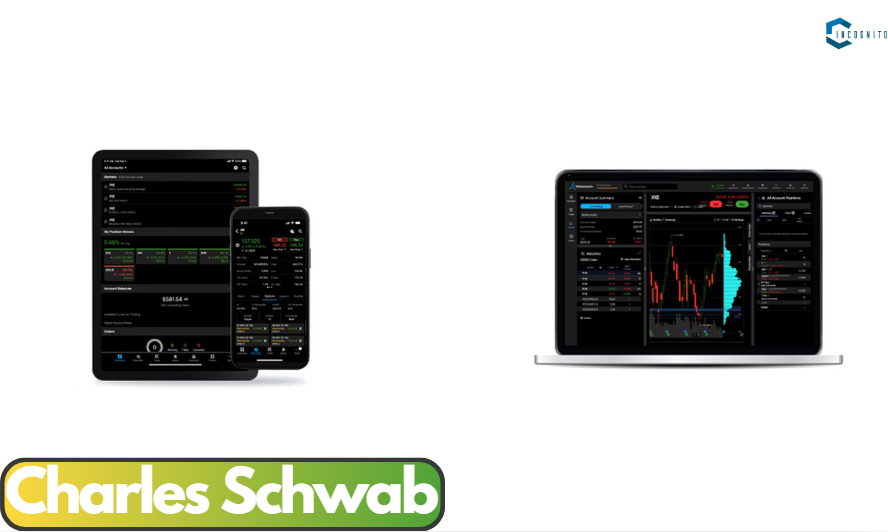
Charles Schwab
1. Charles Schwab
- Origin: Founded by Charles R. Schwab in 1971.
- Available for: iOS and Android.
- Developer: Charles Schwab Corporation.
Why Choose Charles Schwab?
If you’re looking for an app that offers more than just stock trading then Charles Schwab is the one. It has educational tools that allow you to learn about investing while you trade. The acquisition of TD Ameritrade also brought in the popular “thinkorswim” platform which gives you access to excellent tools for learning and practicing trades. It’s like a classroom and stock market all wrapped into one.
Pros:
- No commission for stocks.
- Comprehensive educational tools.
- Available paper trading for practice.
Cons:
- Might feel a bit advanced for absolute beginners.
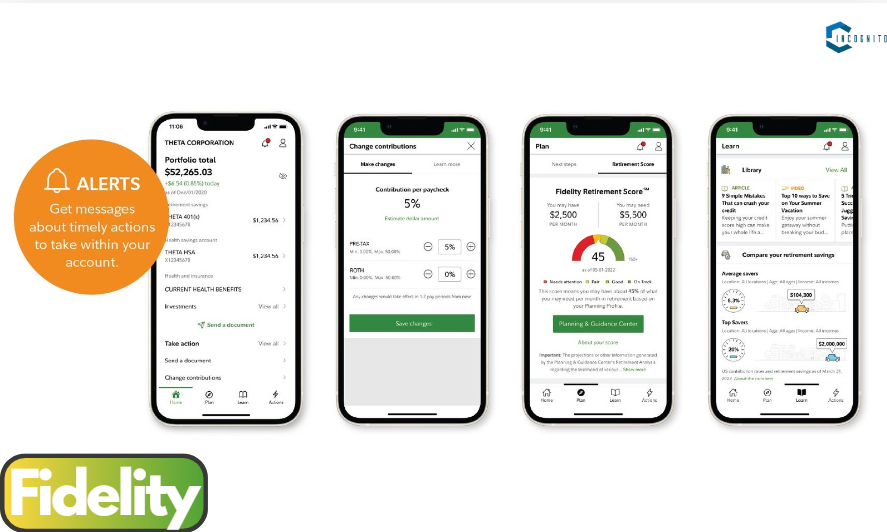
Fidelity
2. Fidelity
- Origin: Founded in 1946 by Edward C. Johnson II.
- Available for: iOS and Android.
- Developer: Fidelity Investments.
Why Choose Fidelity?
Fidelity is one of the best stock market apps for both beginners and advanced traders. It’s user-friendly but doesn’t hold back on tools for those who want to know much more in deep. There’s a “Fidelity Youth App” that even helps teenagers get a grip on investments so if you want your kids to get into the game early then Fidelity’s the one. And, for those who have a workplace 401(k) with Fidelity, it’s super easy to connect accounts.
Pros:
- No stock trading fees.
- Great for beginners and advanced users.
- Offers a youth app to teach teens about investing.
Cons:
- The user interface may seem cluttered to some.
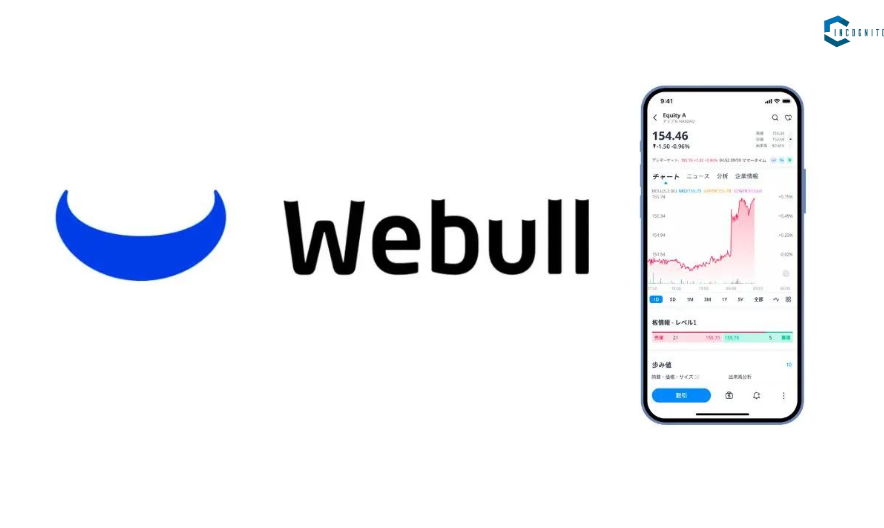
Webull
3. Webull
- Origin: Founded in 2017 by Wang Anquan.
- Available for: iOS and Android.
- Developer: Webull Financial LLC.
Why Choose Webull?
Webull is perfect for anyone who likes features and lots of them. Not only does it provide stock trading at no cost but it also has features like paper trading (to practice), voice command (to trade hands-free), and low interest rates on borrowed funds (margin trading). You also get access to crypto trading through the Webull app.
Pros:
- No stock or options fees.
- Advanced features like voice commands.
- Low margin rates.
Cons:
- Might be a little intimidating for newcomers.
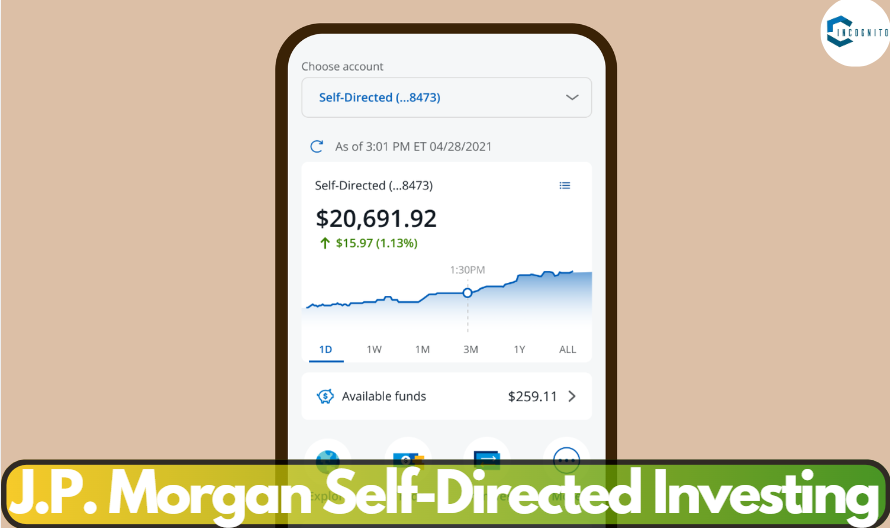
J.P. Morgan Self-Directed Investing
4. J.P. Morgan Self-Directed Investing
- Origin: Founded in 1871 by J.P. Morgan.
- Available for: iOS and Android.
- Developer: JPMorgan Chase & Co.
Why Choose J.P. Morgan?
This is an easy pick if you already bank with Chase. The app integrates your stock trading with your Chase bank accounts which makes things super simple. If you’re already comfortable with the Chase banking app then this will feel like home. The app also provides research and investment ideas from J.P. Morgan experts so you can follow professional advice without leaving the app.
Pros:
- Seamless integration with Chase accounts.
- Research tools and educational resources.
Cons:
- Non-Chase users might not find it as appealing.
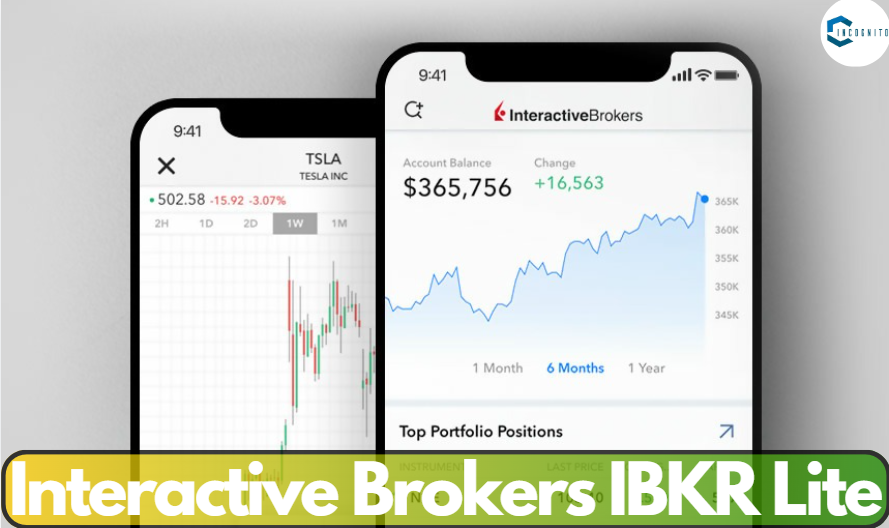
Interactive Brokers IBKR Lite
5. Interactive Brokers IBKR Lite
- Origin: Founded in 1978 by Thomas Peterffy.
- Available for: iOS and Android.
- Developer: Interactive Brokers.
Why Choose Interactive Brokers?
This app is like a toolkit for the more advanced trader. You can customize the dashboard, read from over 200 research services, and even trade in multiple languages (more than nine!). It’s not the simplest app but it’s a powerhouse for anyone wanting to get deep into the stock market.
Pros:
- Customizable trading features.
- Tons of research and news options.
- Supports multiple languages.
Cons:
- Not beginner-friendly.
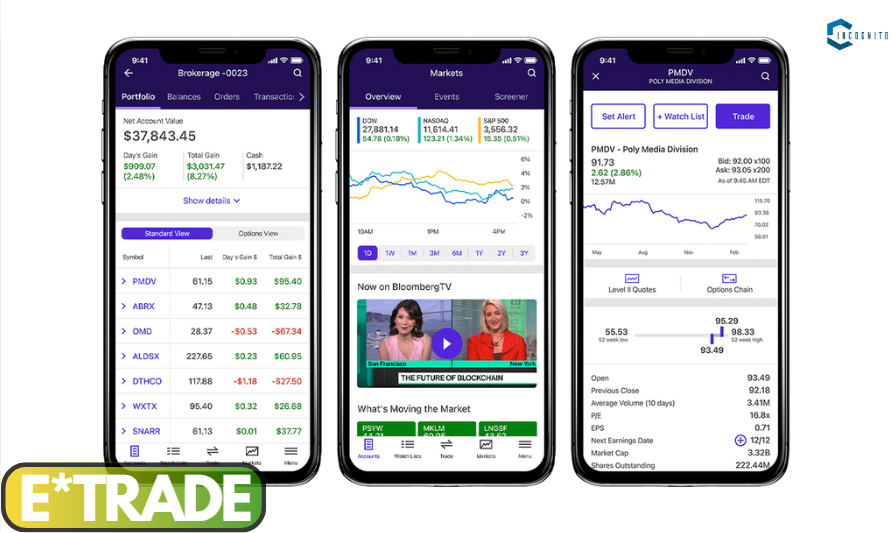
E*TRADE
6. E*TRADE
- Origin: Founded in 1982 by William A. Porter and Bernard A. Newcomb.
- Available for: iOS and Android.
- Developer: E*TRADE Financial Corporation.
Why Choose E*TRADE?
ETRADE provides extended trading hours and a user-friendly app for all levels. It has everything whether you’re a day trader or a long-term investor. You can trade even after the traditional stock market closes with extended hours. You also get access to “Power ETRADE” for more advanced trading.
Pros:
- Extended trading hours.
- Easy-to-use interface.
- Separate app for advanced traders.
Cons:
- It could be too advanced for beginners.
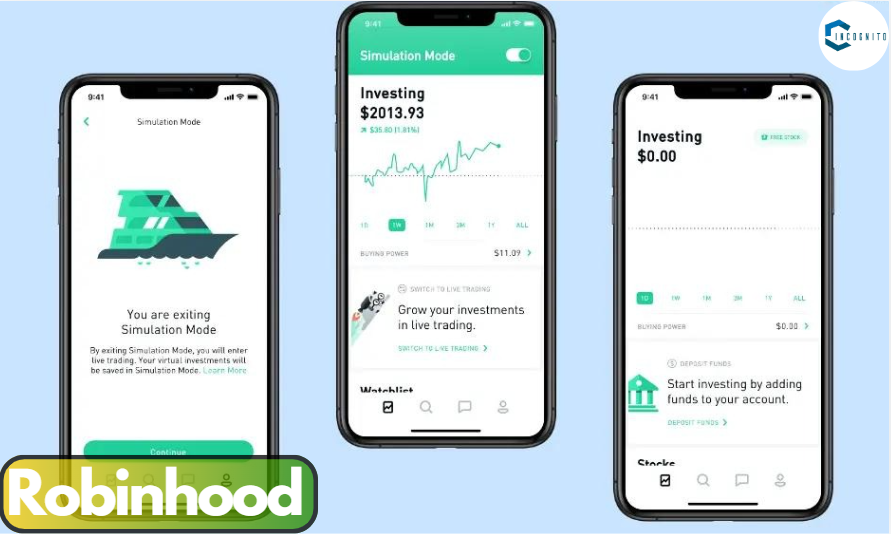
Robinhood
7. Robinhood
- Origin: Founded in 2013 by Vladimir Tenev and Baiju Bhatt.
- Available for: iOS and Android.
- Developer: Robinhood Markets.
Why Choose Robinhood?
Robinhood is often the first app people think of when they hear “stock trading app.” It’s beginner-friendly and its no-frills design makes trading easy for anyone. It’s one of the cheapest ways to get started with no fees for stock or options trading. They also recently introduced an IRA with matching contributions.
Pros:
- Beginner-friendly.
- Zero fees for stocks and options.
- Clean, simple interface.
Cons:
- Limited customer support.
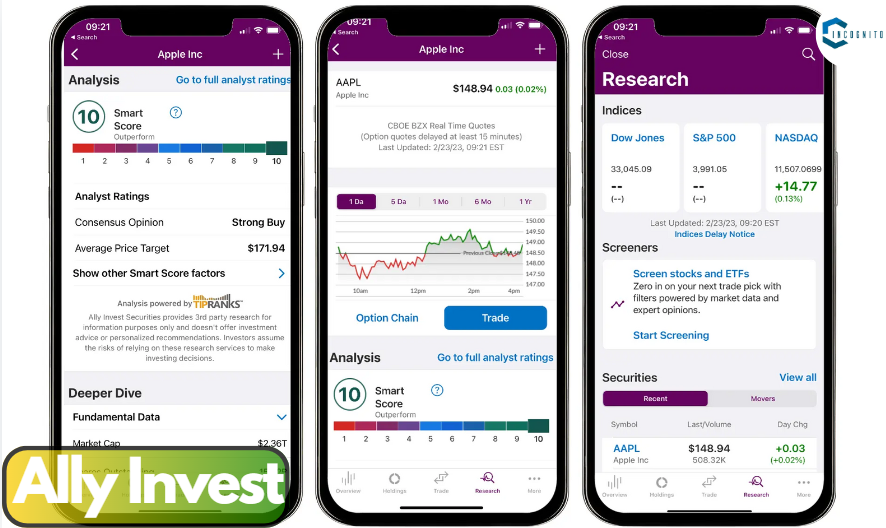
Ally Invest
8. Ally Invest
- Origin: Founded in 1919 as GMAC, rebranded in 2010.
- Available for: iOS and Android.
- Developer: Ally Financial.
Why Choose Ally Invest?
If you’re looking for top-notch customer support then Ally Invest is the best. It is known for having 24/7 help available through phone, email, and chat. This is great if you’re new to investing and might need a hand with things. It also integrates well with other Ally products like their bank.
Pros:
- Excellent customer support.
- Integration with other Ally products.
Cons:
- Fewer advanced features than competitors.
Conclusion About Best Stock Market Apps:
It is time to sum up this blog. You should choose the app as per your needs and interests. You just need to find what you want and all the above apps have got you covered. There are advanced features if you are looking.
That’s it for now. Thanks for reading.
READ MORE ABOUT STOCKS AND TRADING:
Top 10 VPN Apps for India That You Must Try For Privacy
Keeping our personal information private has become really important in a world where we spend more and more time online. It’s no surprise that VPNs (Virtual Private Networks) have gained popularity because of hackers, cyber-attacks, and even websites tracking our activity. VPNs act like a shield by protecting your data from prying eyes and ensuring that your online browsing stays private.
Finding a VPN that works well can be a bit tricky due to various restrictions and local regulations for those living in India. But don’t worry because we’ve put together a list of the top 10 VPN apps for India that are reliable, secure, and easy to use. Whether you’re new to VPNs or simply looking to upgrade, this guide will help you find the best option for your online privacy.
1. ExpressVPN
ExpressVPN is like the superhero of VPNs because it is fast, reliable, and great for privacy. It’s one of the most popular VPNs worldwide, and for good reason.
- Features: ExpressVPN offers military-grade encryption, a kill switch, and split tunneling, making it super secure.
- Subscription cost: Starts at ₹700/month.
- Pros: Very fast, works great for streaming services like Netflix, and offers 24/7 customer support.
- Cons: A bit expensive compared to other options.
- Number of servers: 3,000+ servers.
- Server locations: 94 countries.
If you’re willing to pay a little extra for top-tier performance, ExpressVPN is a fantastic choice.
2. NordVPN
NordVPN is like the Swiss Army knife of VPNs. It’s packed with security features and is great for both beginners and advanced users.
- Features: Double encryption, CyberSec for blocking ads and malware, and a strict no-logs policy.
- Subscription cost: Starts at ₹350/month.
- Pros: Affordable and offers great security options.
- Cons: The desktop app can be a bit slow at times.
- Number of servers: 5,400+ servers.
- Server locations: 59 countries.
If privacy is your top concern, NordVPN’s double encryption gives you that extra layer of protection.
3. Surfshark
If you’re on a budget but still want a solid VPN, Surfshark is a great option. It’s cheaper than most but still offers excellent security and features.
- Features: Unlimited device connections, CleanWeb to block ads, and a kill switch.
- Subscription cost: Starts at ₹190/month.
- Pros: Very affordable, great for families or people with many devices.
- Cons: Not as fast as ExpressVPN or NordVPN.
- Number of servers: 3,200+ servers.
- Server locations: 100 countries.
Surfshark is perfect if you’re looking for a budget-friendly option that still gets the job done.
4. CyberGhost
CyberGhost is like that friendly neighbor who always helps you out—it’s easy to use and great for beginners who aren’t tech-savvy.
- Features: Dedicated streaming servers, strong encryption, and a kill switch.
- Subscription cost: Starts at ₹290/month.
- Pros: Easy to use, great for streaming and torrenting.
- Cons: Speeds can vary depending on the server.
- Number of servers: 9,000+ servers.
- Server locations: 91 countries.
CyberGhost is a great pick for anyone who wants a simple, straightforward VPN experience.
Read About the XNXUBD VPN Browser here.
5. ProtonVPN
ProtonVPN comes from the same team behind ProtonMail, so you know it’s serious about privacy.
- Features: Strong encryption, secure core servers, and a free version available.
- Subscription cost: Paid plans start at ₹400/month, but there’s also a free option.
- Pros: Offers a free plan with decent speeds, no data caps on the paid version.
- Cons: Fewer servers compared to others.
- Number of servers: 1,600+ servers.
- Server locations: 64 countries.
If you’re all about privacy and don’t mind a bit of a learning curve, ProtonVPN is a solid option.
6. Private Internet Access (PIA)
Private Internet Access, or PIA, is like a reliable workhorse because it’s dependable, offers plenty of features, and won’t break the bank.
- Features: Ad-blocker, strong encryption, and a no-logs policy.
- Subscription cost: Starts at ₹180/month.
- Pros: Affordable, strong focus on privacy.
- Cons: Based in the US, which might worry privacy enthusiasts.
- Number of servers: 10,000+ servers.
- Server locations: 84 countries.
PIA offers a lot of bang for your buck and is great for both beginners and more experienced users.
7. IPVanish
IPVanish offers solid speeds and security, making it a great choice for people who want to stream or use public Wi-Fi safely.
- Features: Unlimited device connections, no-logs policy, and a kill switch.
- Subscription cost: Starts at ₹250/month.
- Pros: Fast, especially good for streaming.
- Cons: Customer support isn’t as strong as other VPNs.
- Number of servers: 2,000+ servers.
- Server locations: 75+ locations.
IPVanish is a good option for streaming enthusiasts or anyone using multiple devices at once.
8. PrivateVPN
PrivateVPN is small but mighty. It’s affordable, secure, and great for privacy-conscious users.
- Features: High-level encryption, zero-logs policy, and torrent-friendly servers.
- Subscription cost: Starts at ₹200/month.
- Pros: Very secure, great for torrenting.
- Cons: Fewer servers compared to other VPNs.
- Number of servers: 200+ servers.
- Server locations: 63 countries.
PrivateVPN may not have as many servers as its competitors, but it’s still a solid choice for privacy.
What is Tailscale? Read here.
9. Hide.me VPN
Hide.me is like a ninja of the VPN world because it is stealthy, fast, and secure.
- Features: AES-256 encryption, a free plan with limited features, and a kill switch.
- Subscription cost: Starts at ₹300/month.
- Pros: Free plan available, solid privacy features.
- Cons: Limited server locations on the free plan.
- Number of servers: 2,000+ servers.
- Server locations: 45+ countries.
If you’re looking for a free option to test the waters, Hide.me VPN is a decent pick.
10. FastestVPN
As the name suggests, FastestVPN is all about speed while keeping your data safe.
- Features: Ad-blocker, malware protection, and P2P optimized servers.
- Subscription cost: Starts at ₹160/month.
- Pros: Great for speed, affordable.
- Cons: Limited server network.
- Number of servers: 350+ servers.
- Server locations: 40+ countries.
FastestVPN is a solid choice if speed is your top priority and you want something that won’t cost a fortune.
Conclusion About Top 10 VPN Apps for India:
When it comes to choosing the right VPN for India, it all boils down to your needs. Whether you’re looking for speed, privacy, or just something that won’t break the bank, there’s a VPN on this list for you. From the feature-packed ExpressVPN to the budget-friendly FastestVPN, each of these options will keep your online activity private and secure. So, why wait? Protect your privacy today!

